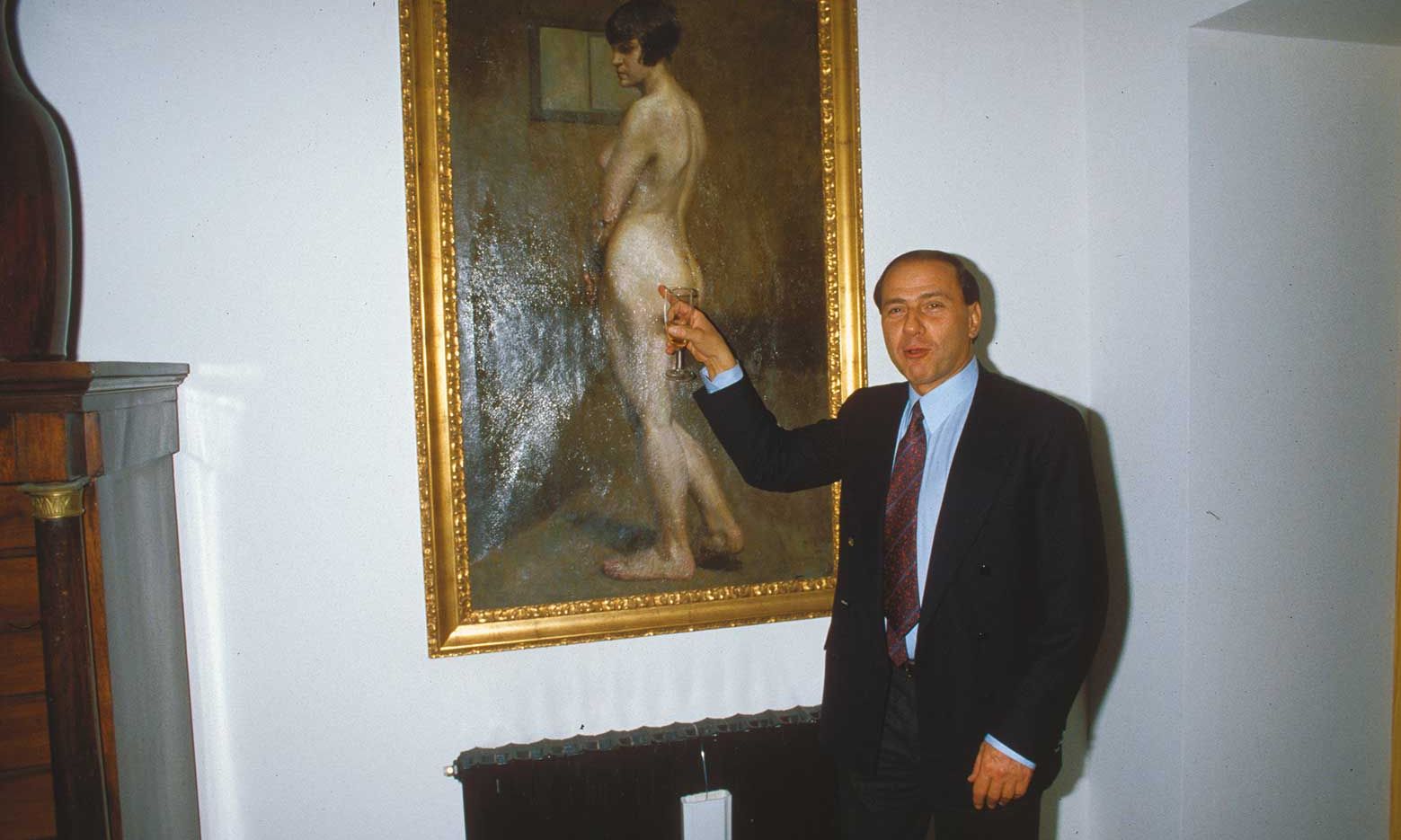Finger on the pulse? In 2020 Silvio Berlusconi (pictured, above in 1985) bought a 3,200 sq. m warehouse to store 24,000 works, the bulk of his collection that included paintings by Titian, Parmigianino and De Chirico
Photo Archivio Cicconi/Getty Images
Silvio Berlusconi, the former cruise-ship crooner turned three-time prime minister of Italy who died aged 86 in June, was known around the world for his diplomatic gaffes, ‘bunga bunga’ parties and numerous legal trials for embezzlement, extortion, tax fraud, money laundering, mafia collusion and underage prostitution. According to some of his closest confidantes, he was also an avid art collector who bought so many paintings, by artists including Titian, Parmigianino and De Chirico, that he had to store them in a 3,200 sq. m warehouse.
“He was very passionate; passionate in life and passionate about art. He loved buying works that made an impression on him,” says Cesare Lampronti, a London-based art dealer often described as “Berlusconi’s gallerist”. Berlusconi would buy works at auctions or via TV sales for fun to “escape” the stresses of politics and business, Lampronti adds.
While Berlusconi was an “autonomous” and “instinctive” collector, he often sought advice from experts like Lampronti and Vittorio Sgarbi, the art critic and a former MP for Berlusconi’s right-wing Forza Italia party, Lampronti says. His broad tastes spanned the Renaissance period to the 20th century, with Berlusconi spending anywhere between thousands and millions of euros on individual works. He offered some of them to “friends and acquaintances” as gifts, the gallerist says.
Many of Berlusconi’s most valuable works were displayed in the lavish 18th-century Villa San Martino in Arcore near Monza, the politician’s powerbase where he commissioned the Tuscan sculptor Pietro Cascella to build a quasi-Futurist mausoleum from marble. Works stored in the villa included a copy of Parmigianino’s Antea (1524-27), a portrait of the post-war actor Anna Fallarino by the Milanese artist Pietro Annigoni and a work of unknown authorship that resembles the Mona Lisa with her breasts exposed, Sgarbi, now a culture ministry undersecretary, told the news agency Adnkronos in 2020.
Sgarbi added that one of the most valuable works in the villa was Titian’s Portrait of Cardinal Ippolito de’ Medici (1533). Valued at €4m-€5m, the painting was formerly displayed at the Cleveland Museum of Art. Lampronti confirms that the work formed part of the Berlusconi collection.
Berlusconi kept many other paintings in a warehouse near Arcore that he bought in 2020, a spokesperson for Immobiliare Idra, the company that manages Berlusconi’s properties, says. Many of the works stored there were formerly displayed in the Villa Gernetto, another Berlusconi residence near Arcore, the spokesperson adds. The warehouse contained 24,000 works by the time of Berlusconi’s death, Sgarbi told the Askanews website in June.
The politician had bought “a sea of cheaper works” during the last two years of his life, though the size of his collection had been exaggerated, Lamprotti claims. The Immobiliare Idra spokesperson suggests that many of the stored works were of limited value. “We are not talking about paintings by Canaletto,” she says.
At one point, Berlusconi planned to open a private museum in the grounds of his residence, Villa San Martino, but the project did not get off the ground
Dino Fracchia/Alamy Stock Photo
During his life, Berlusconi planned to exhibit some of his finest purchases, including those by Lucio Fontana and Giorgio de Chirico, in a specially built gallery in the grounds of his San Martino residence, according to Rosalba Colombo, the left-wing mayor of Arcore from 2011 to 2021. Berlusconi met Colombo to present plans drawn up by the surveyor Francesco Magnano for a “semi-circular” private gallery that would have been open to visitors on select days. He scrapped the project a year later due to bureaucratic obstacles, Colombo says.
Sgarbi has renewed calls for the museum to be created following Berlusconi’s death. “I would introduce a €25 entry fee,” he told the AgCult heritage news site. However, Berlusconi’s family, rather than the culture ministry, would ultimately decide on the project’s fate, Sgarbi said. While details of Berlusconi’s will had not been released before we went to press, commentators predict that Marta Fascina, Berlusconi’s last partner, is in line to take over the villa.

